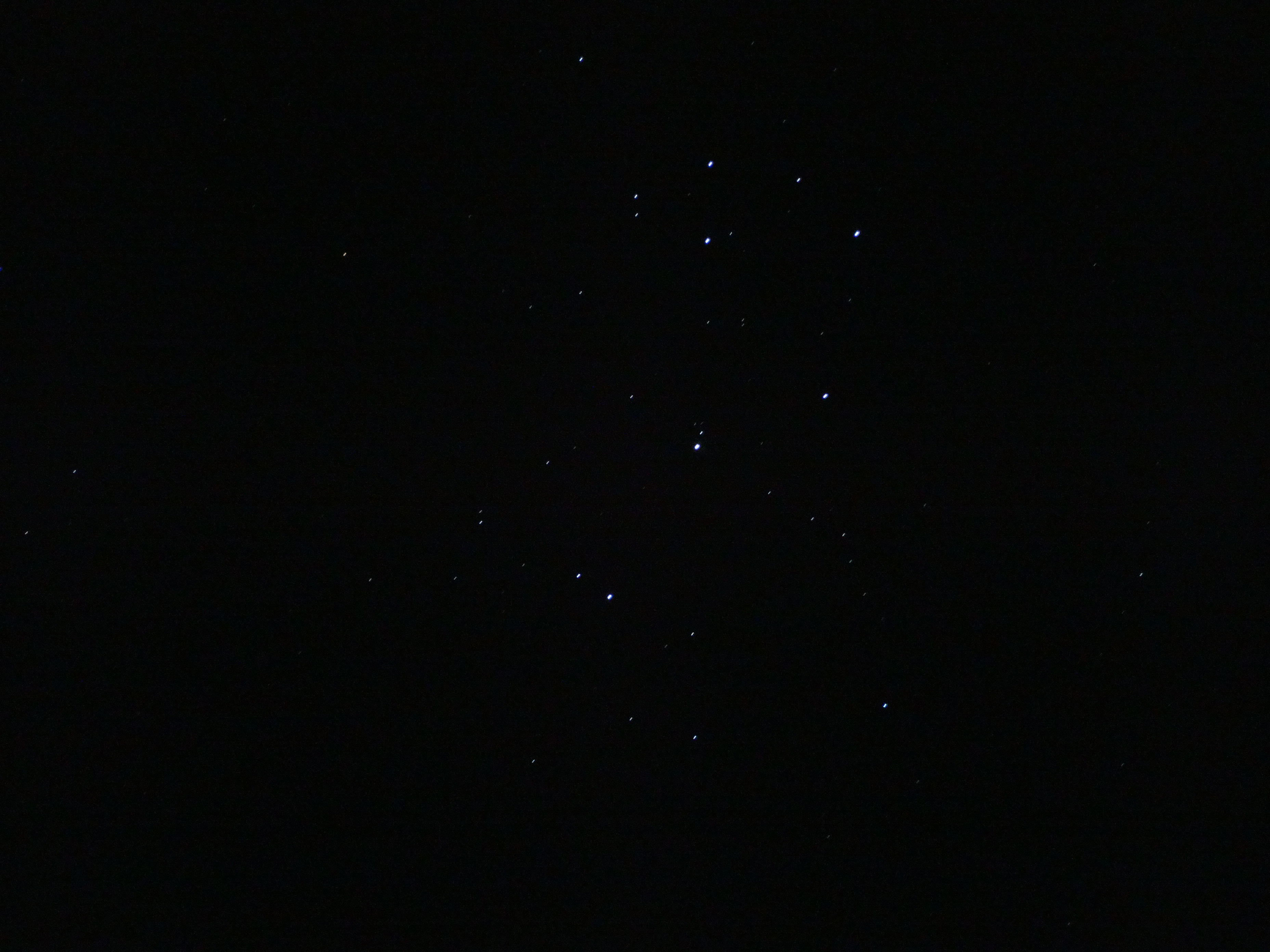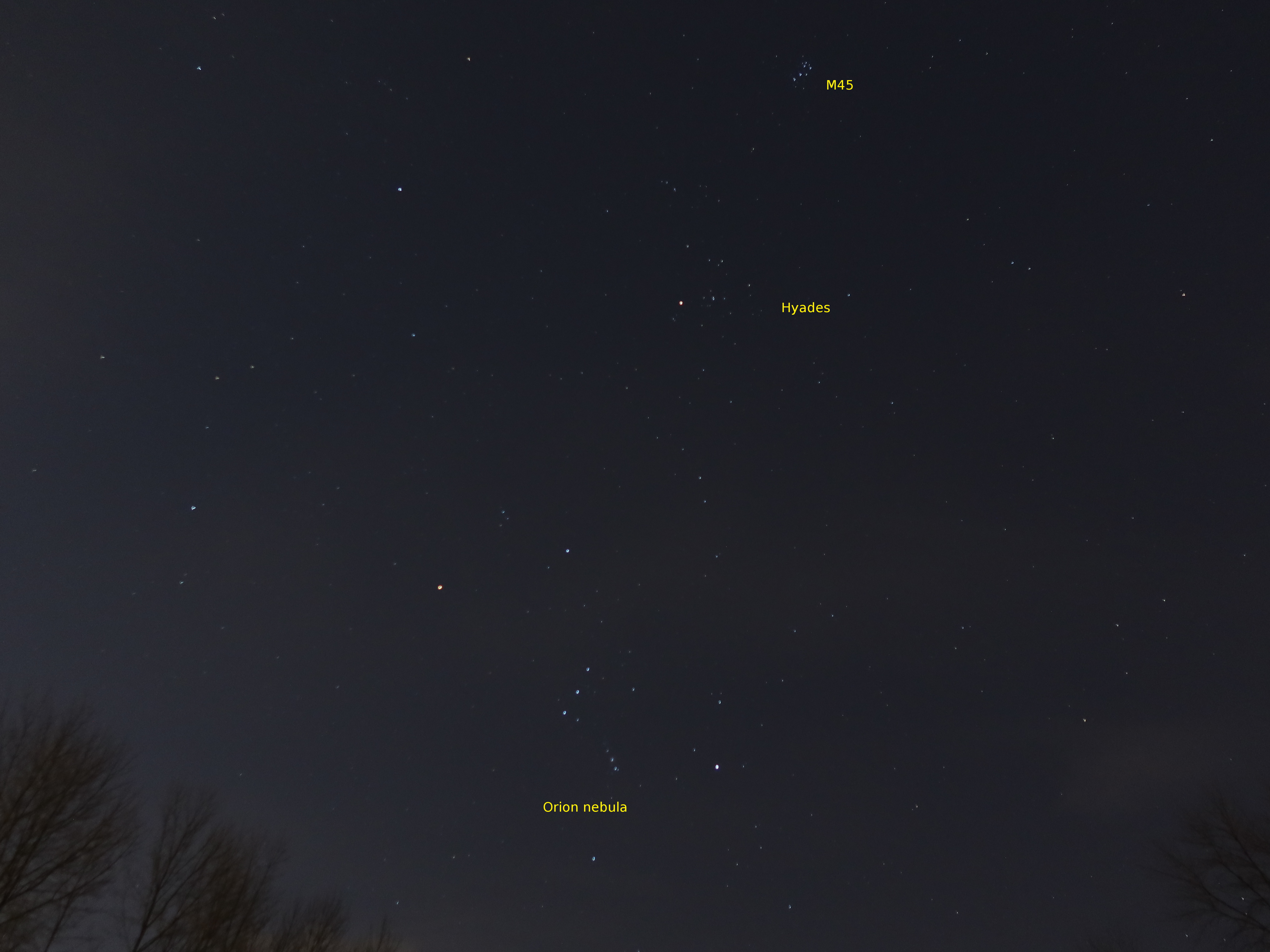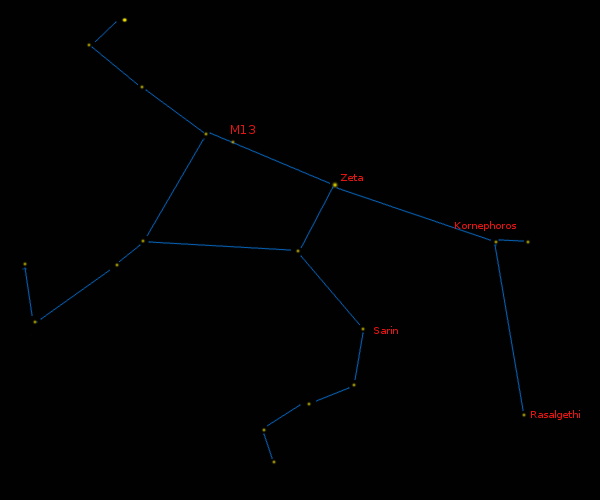Open Star Clusters

These are small and young groupings of stars in the disk of a galaxy. For spiral galaxies like our Milky Way this corresponds to the spiral arms. By measuring the distance between open star clusters and Earth, we can determine the shape of our galaxy. Open star clusters are found in the disk of all galaxies that still have star formation because that's where all the gas and dust is. Gravity pulls the gas and dust towards the galaxy so there is a lot of it in the disk and center and less in the halo. Open star clusters are not found in the center of a galaxy because it is usually very energetic there because there is a black hole in the center. The stars and dust and gas have to orbit faster to not fall in. This heats up the dust and gas and hot dust and gas is not good for star formation because it has to much energy counteracting gravity. So the only good place is the disk which is why open clusters are there.
Open star clusters contain a few hundred stars and are ~30 light years across. Because there are less stars than in globular clusters(the other type of star cluster) there is also less gravity keeping the group together and so the stars in these clusters are further apart than in globular clusters. That is why these clusters contain mostly young stars because after a few million years(short in astronomical terms) they get torn apart by the gravitational pull of their surroundings.
Formation
Stars form in nebulas(clouds of gas and dust mad of atoms and molecules). Since several stars are born at the same spot they are bound by gravity and stay together forming a star cluster.
When a molecular cloud(nebula) gets disturbed by a shock wave from a supernova or a gravitational wave small clumps of dust and gas form in the nebula. Through gravity, they get bigger and eventually become big enough to ignite and form stars. These stars which are all made from the same nebula are now part of an open star cluster.
There are less stars in open star clusters than in globular clusters(the other main type of cluster) because the cloud of gas and dust is smaller. Globular clusters formed in a big nebula at the beginning of the universe's history. Open clusters formed a lot more recently from gas and dust remaining after stars died. Not all stars run out of fuel at the same time. Bigger and heavier stars run out of fuel first because there is more mass and there for more gravity crushing the star. To counteract gravity the star has to release more energy by doing more nuclear fusion then smaller stars. So there is a bit of gas here and a bit of gas there that eventually merges into a bigger nebula. But Most gas and dust is still in living stars so nebulas do not get big enough to form the amount of stars found in globulars.
Spotting Them in the Night Sky

Because we are in the disk of our galaxy we are very close to open clusters and so can easily see many of them with the naked eye. Here are some open cluster examples, but there are many many more.
There are 3 that are very easy to spot with the naked eye or with small binoculars close to the Orion constellation. Orion is a very bright constellation visible from November to March. If you are in the northern hemisphere it rises in the southeast and sets in the southwest. If you are in the southern hemisphere Orion rises in the northeast and sets in the northwest.
The first one is NGC 2169 in the Orion nebula which is under Orions belt. It is a newly formed cluster and new members are still being formed.
Then if you go up and to the right in the northern hemisphere or down and to the left in the southern hemisphere(compared to the northern hemisphere constellations are upside down and reversed left to right in the southern hemisphere) you will find the Hyades open cluster in the constellation Taurus. It is the closest open cluster to Earth. An easy way to spot it is to look for Aldebaran, a bright orange-red star in the middle of the Hyades, which from Earth looks like its part of the cluster but in reality its not.
Then if you go a bit more to the right if you are in the north or a bit more to the left if you are in the south you will find the famous Pleiades(M45) also known as the seven sisters because ~7 stars can easily be seen with a good naked eye.
Globular Star Clusters
These clusters are big and old groupings of stars.
They contain millions of stars in a space of 10 to 300 light years in diameter. Because the place is so crowded stars are 1 or less light years apart(as a reference the closest star to the sun is ~4 light years away). This is why stars orbiting more then one other star is common in these clusters. Because they are so close it can occasionally happen that stars collide with each other and form a bigger star.
Even though the stars are very close together the globular cluster does not collapse into itself because the stars it contains are moving and this motion is enough to counteract gravity.
The stars in these clusters are closer together than in open clusters because there are a lot more stars and so there is also more gravity. Because they are tightly bound by gravity these clusters have a spherical shape. This is also why there are more stars at the center. Gravity pulls the stars in towards the center.
Many globulars have only one generation of stars, but some have 2 or 3. If on their orbit around the center of their galaxy, they collect gas and dust due to their strong gravity then this gas and dust can form a new generation of stars. These newer generations are more on the outside of the cluster because the gas and dust from which they formed comes from outside the cluster. Globuar clusters don't contain much loosely flying around gas and dust because the stars constantly eject particles(stellar wind)(in the case of our sun its called the solar wind) which blows the gas and dust away. Even thought they are so massive globulars don't have enough gravity to stop the gas and dust from escaping.
As mentioned above in the open star cluster section the bulge(center and surroundings) of a galaxy contains more gas and dust than the halo Which is why globulars are more metal rich if located around the center of the galaxy than if in halo.
globulars can also get torn apart if a very massive object flies by. But this is not that common.
Formation, Location and Rotation
Globular clusters are so big that they can be a few hundred light years across. They are thought to have formed when the galaxies formed because only then was there enough gas and dust to form the large amount of stars found in globulars. In fact, they are thought to be one of the oldest observable things in our galaxy.
The only way they could form nowadays is if two galaxies collide because then through changes in gravity many small nebulas can combine into a massive one and the shock waves created by this change in gravity can cause disruptions in the gas and dust cloud and then initiate star formation.
Because these clusters formed long ago, they contain mostly old and not very massive stars. Old stars are usually not more than 2 solar masses because the more massive ones have become neutron stars, white dwarfs, or exploded in supernovas. The more massive a star the more material is pushing down so the star has to do more nuclear fusion to counteract gravity and so it run out of fuel faster than less massive stars.
These big clusters orbit mostly in the halo and in around the center of a galaxy. Globular clusters are very old and their formation is not yet so well understood, but it is thought that they formed independently but at the same time as galaxies. Because galaxies are a lot more massive globulars fell into orbit around them which is why many of them orbit in the halo. But some of them got into to close orbit and fell into the disk. There they got slowed down by the gravity of the stars in the disk and either fell to the center of the galaxy or got torn apart. It is not yet well understood why they survive in the bulge since its crowded there.
Globulars rotate, but because they were not formed by the same cloud of dust and gas as the Milky Way they do not rotate at the same speed as our galaxy. In fact, many have a slower rotation speed because for a not yet understood reason the molecular cloud rotated more slowly.
In the center of a galaxy the orbit of globulars is more circular because this region is more densely populated so one object pulls it in one direction while another pulls it in the other direction canceling the first force. While in the halo there orbit is a lot more eccentric(elliptical) because since they are far from the center, the galaxy's gravity is not that strong, so other objects (ex:other galaxies) can change their orbits. The opposite pulls don't cancel out because one is weaker.
In halo some even orbit in the opposite direction to the disk because as mentioned above, they are thought to have formed independently from their galaxy and only fell into orbit later.
That is why the Milky way has ~150(it is an approximation because some might be hidden by gas and dust(nebulas)) while Andromeda which is more massive has between 300 and 500.
Globular Clusters vs Dwarf Galaxies
The difference between dwarf galaxies and globular clusters is that dwarf galaxies have many generations of stars while globulars usually only have one or a few(the stars in Dwarf galaxies are not born all at the same time). Dwarf galaxies are bigger and more massive so they can hold on to their gas and dust more easily. They also ususally orbit farther out than globulars even thought some of them eventually fall into closer orbits making them harder to distinguish from globulars.
Spotting Them in the Night Sky

Globulars are harder to see because they are farther away from Earth, but they can be seen with a telescope. A good example is M13 in the Hercules constellation.
Hercules rises in the east and is visible from April to November in the northern hemisphere and from May-June to August-September in the southern hemisphere.